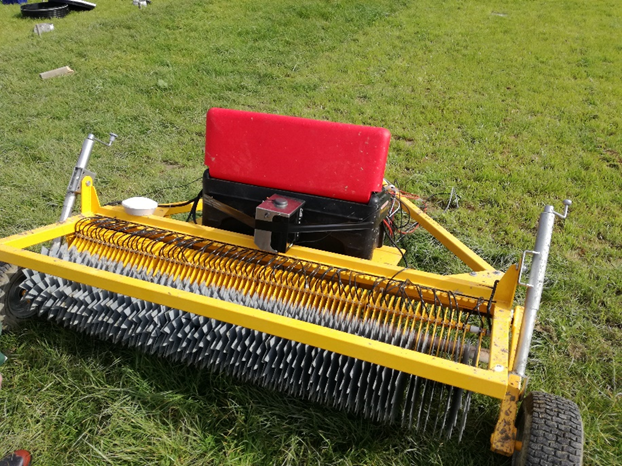Mapping and managing urine patches to reduce nitrous oxide emissions from grazed pastures
Urine deposited by grazing livestock is the primary source of direct N2O and indirect N2O (from deposition of volatilised ammonia and leached nitrate) emissions from grazed soils. A urine-patch has 2–3 times more nitrogen (N) than the pasture’s immediate N requirements, making it a hot spot for N losses with potentially deleterious impacts on the environment. There is a large potential cost-saving if N inhibitor applications to reduce N loss from urine patches can be targeted directly to urine patches, thereby avoiding application of treatments over large areas of pasture unaffected by urine deposition.
This GPLER/GRA funded project SOW15-Spikey-LCR-SS developed and tested a new ground-based urine sensing research tool, Spikey for Research (Spikey-R; Figure 1), which can accurately locate, measure, and map the size and shape of urine patches.

Validation experiments were carried out under varying conditions in New Zealand, Australia, and Ireland, in comparison with existing technologies for urine patch detection (i.e., thermal camera and aerial sensing using drones). Spikey-R was the most effective method of detecting bovine urine patches of varying size up to at least 48 hours after deposition under a variety of soil types and climate conditions.
This project has also determined critical factors affecting estimations of N2O emissions from grazed pastures. Scientific understanding of N2O emissions from urine deposited to grazed pasture relies heavily on urine patch simulation studies. However, simulated urine patches are typically uniformly wetted areas that do not emulate the natural dispersion and expansion of real urine patches on grazed pastures. We investigated how urine dispersion in a patch influences N2O emissions and emission factors for deposited urine. The findings showed that cumulative N2O emissions varied when measured by commonly used methods (measuring emission from uniformly urine wetted areas), and natural dispersion and expansion of real urine patches at different soil moisture levels. Thus, it is essential to obtain data on physical mixing of inhibitors with real urine patches than measured from uniformly wetted areas to enable the development of suitable and effective targeted mitigation options to reduce N2O emissions from grazed pastures.
In this project a model of urine distribution within a patch was developed based on urine dispersion in soils and the interception of urine-N by targeted N transformation process inhibitor application. This model showed that poor physical co-location of urine and inhibitors is likely to limit the degree to which inhibitors can effectively reduce N2O emissions. This in turn points to another aspect that is addressed in current New Zealand Agricultural Greenhouse Gas Research Centre funded research “On-farm targeted urine patch management”: can the N losses associated with urine-N be efficiently reduced by treating these urine-patches detected within 48 hours of deposition by grazing animals?
For more information, refer to:
- Saggar S, Adhikari K, Giltrap D, Luo J, Palmada T, Berben P, Lindsey S, Sprosen M (2022) Improving the accuracy of nitrous oxide emission factors estimated for hot-spot areas within dairy-grazed farms. Science of the Total Environment 806: 150608 https://doi.org/10.1016/j.scitotenv.2021.150608.
- Giltrap D, Portegys N, Saggar S, Hanly JA (2021) Estimating the proportion of deposited urine patch intercepted by a targeted inhibitor application. Environmental Technology https://doi.org/10.1080/09593330.2021.1934561.
